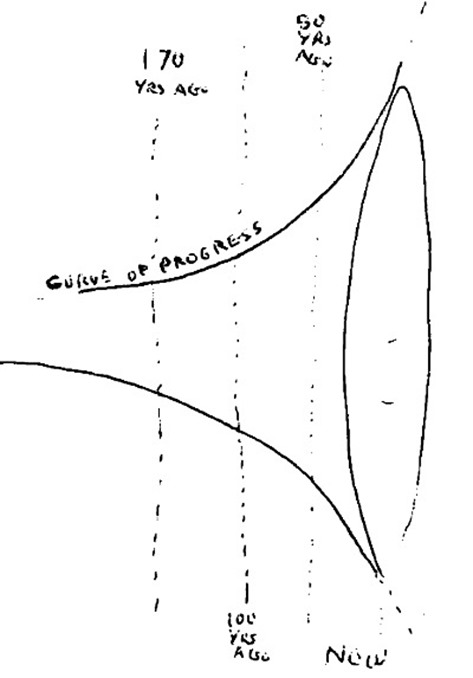Adam Blatner
Words and Images from the Mind of Adam Blatner
Perspectives and Dimensions
Originally posted on February 11, 2016
We live in a reality that is bigger than ordinary reality, because mind operates beyond reason, beyond its own ability to comprehend it all. I’ve found the metaphor of dimensionality useful—and mainly that there are higher as well as lower dimensions.
The point or zero dimensions is the peculiar but widespread idea that words mean things. A chair means only a chair for sitting as in the Western view of chairs. It is not a machine gun with the legs serving as gun barrels, as young children might well pretend in their play. Or a step stool for reaching up high. A chair is to sit, not squat, as many non-technologized people do. It’s fine in part but has limits when other qualities are added, thrones, non-chair cultures, sitting for work, optimal health maintenance, other variables related to sitting too much.
The first dimension is a line, and it applied to anything that is more or less. As my son David noted in his book on Spectrums, these can be truly innumerable
The second dimension is a plane which can encompass many different lines, portrayed at different angles. Planes though can have colors and tones and curves and figures, to name but a few elements that would not be conceivable if we only thought in one dimension. There are qualities and elements in every higher dimension that don’t exist in the lower dimension. Thus we have paradigm shifts. This theme will repeat with each transition to a yet higher dimension.
The third dimension has thickness, substance, materiality, and is close to what minds generally experience as real, as different from a picture.
The fourth dimension moves, has movement, grows, develops, ages, dies, and has all the qualities reserved to real life that changes.
The fifth dimension is ordinary mind, early mind, that considers not only space and time, but also “ifs”—what if this had happened; might that yet happen, or might some other thing happen? It includes the subjunctive. It is rudimentary in animals, developed in humans.
The sixth dimension includes some degree of reflection on mind, how it can be fooled, illusions, other people’s viewpoints.
The seventh dimension transcends definition. It partakes of music in all its variables and changes, personal taste, many aspects of creative design in two dimensional space (i.e graphic design), three dimensional spaced (e.g., architecture, landscape design, city planning), and even other dimensions—science fiction, myth, etc.
We can barely tap into this last, seventh, dimension. It involves play and fiction, boundary breaking and art, comedy and deep depression. I confess I cannot dissect this dimension cleanly, but I know it exists. The point is that we are in an era when it is important to contemplate, play with, and create in the seventh dimension, knowing we don’t know and plunging ahead anyway.
The other dimensions may be used as building blocks—to use a 3-D metaphor—partly because advancing human mind has begun to discover and utilize more about the higher dimensions. I’m just pointing out that there are higher dimensions, what they sort-of entail, and note again how each new dimension of existence—especially mind and what can be accessed through mind— involves many elements that cannot be accounted for at all by lower dimensions.
Yet in our own time it is important that we explore the fifth, sixth, and seventh dimensions because each casts a whole higher perspective—a new paradigm—on whatever we had thought up to the present moment.
This of course shakes the most commonly accepted paradigm that there is a truth, one truth, that can be expressed and trusted, “believed in,” as adequate and eternal. All this is being confronted with a discomfiting growing awareness that things change, including what used to be thought of as eternal truths that should be understood only one true way. It’s not only that things change, but the number of facets of mind, points of view, perspectives, inter-connections with other phenomena (not even material things, such as musical chords)—all these transcend ordinary “this is a stick” mind. They question the capacity of ordinary mind to comprehend reality, and I question even extra-ordinary mind’s presumption that there might not yet be even higher-than-seven dimensions.
Still, considering that we live in an era of logarithmic growth-and-expansion of mind, speculations such as these are not out of the question. Perhaps they will help.
Logarithmic growth-and-expansion may be illustrated not only by an upwardly sloping curve, but one going in all directions, so the shape of a horn of a trumpet goes beyond the two-dimensional curve.
Things are expanding and speeding up in complexity and inter-related-ness, so even a three dimensional figure doesn’t do it all justice.
If you can follow the aforementioned paragraphs and have yet more to add, I welcome your input. May I have your permission to publish those of your responses I find useful in putting forth this theory or line of thought?

Leave a Reply